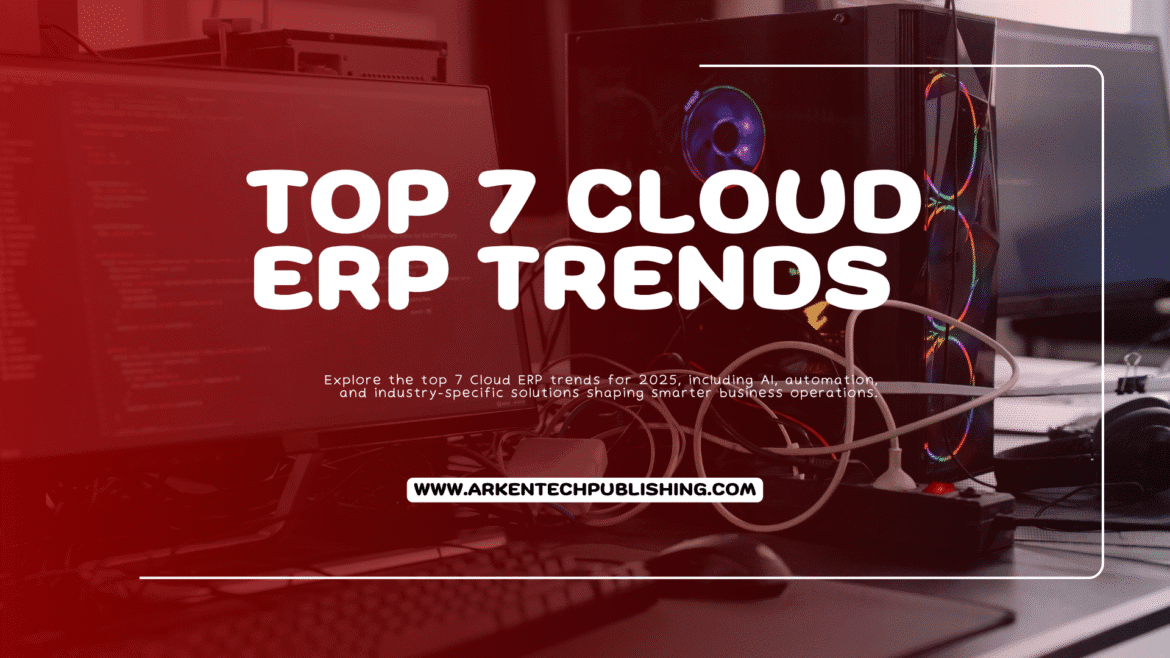Introduction
Cloud ERP Trends is no longer just a back-end-system-this flexible is a digital spine for data-driven companies. As a race for companies that will remain competitive in 2025, it’s not just smart to squeeze the ERP trends that squeeze the latest cloud. This blog dives into the top 7 Sky ERP trends how organizations operate, grow and are suitable in real time.
Changes in flexible, intelligent Cloud ERP Trends solutions from traditional ERP intensify in industries. Companies believe that a modern ERP is not just about operational efficiency-it is about agility, intelligence and customer-centric strategies. Let’s see which technologies and functionality lead the development of ERP in today’s cloud-first world.
1. AI and Agentic Automation Lead the Way
Artificial intelligence does not only increase ERP – it runs it. With agents AI, the systems are constantly identifying problems, performing and performing autonomous tasks. It reduces manual workload, accelerates workflow and increases accuracy.
Why it matters: Companies using AI-driven Cloud ERP Trends systems have had a 30% reduction in human error and 20% fast treatment time.
Bonus insight: AI is now making the future of maintenance, detection of fraud and adaptation of workflow.
2. Low-Code/No-Code Customization Gains Tractio
The demand for quick configurations has promoted to use low codes and NO-codes ERP platforms. These devices reinforce non-technical users to create dashboards, reports and workflakes cuts to a large extent.
2025 Insight: Gartner predicted 70% ERP adaptation, will be handled by civilian developers by 2026.
Bonus insight: This Cloud ERP Trends reduces the dependence on developers and speeds delivery.
3. Vertical ERP Solutions Become the Standard
Generic ERPs are replaced by industry-specific ERP solutions. Whether it is the health care system, retail or production, that offers special compliance, automation and integration functions from an analog module box.
Constable ERP = Low implementation time and better return.
Bonus insight: Udyog Erps streamlined sector -specific reporting and data rules easily.
4. Cloud-Native, Scalable Architectures Dominate
Modern Sky -ERP platforms embrace microsar and containerized architecture, which is capable of integration with elastic scalability, fast updates and new technologies.
This makes the system more beneficial for making market changes and easy to maintain.
Bonus insight: These systems support rapid features and fast disaster recovery.
5. Enhanced Data Analytics and Embedded BI
Today’s Cloud ERP Trends system is compiled with real-time analysis and business-teligen panel, which transforms data into decisions much faster than ever.
Real-time dashboard provides better forecasts and financial plans in B2B regions.
Bonus Insight: Predictive insight helps companies demand demand and plan resources efficiently.
6. Mobile-First ERP Experiences
From field agents to C-suit officers, all ERP mobility expects. Responsible dashboards, app-based interfaces and mobile-first designs are important for surgery on the go. 2025, mobile access will be responsible for more than 50% ERP interaction in medium -sized companies.
Bonus insight: Offline access and biometric login increase productivity and safety equally.
7. Cybersecurity and Compliance Are Top Priorities
With increasing data violations and global compliance laws, ERP Cyber Security is exposed and the center. Characteristics such as role-based access, clipping of end-to-end and real-time monitoring are non-sales.
ERP suppliers are integrated into devices such as IAM, DLP and zero trust architecture.
Bonus insight: Continuous correction tracking helps to avoid costly legal punishment and recognized injury.
Conclusion
2025 Cloud ERP Trends are not just evolutionary – they are not transformation. From AI and low code tools to mobile-first experience and verticalization, staying forward means choosing ERP solutions that are smart, scalable and safe.
In the future defined by real-time decisions, agility and cross-functional cooperation, these Cloud ERP Trends are not optional-they are important. Organizations that prioritize adaptation capacity, security and intelligence will be the one who leads the digital change curve. If you want to remain 2025 and then competitive, it’s now time to modernize your ERP.
Serving these innovations quickly, gaining a strategic advantage, improves the opinion of the opinion and stays in position for permanent growth in the digital economy..

